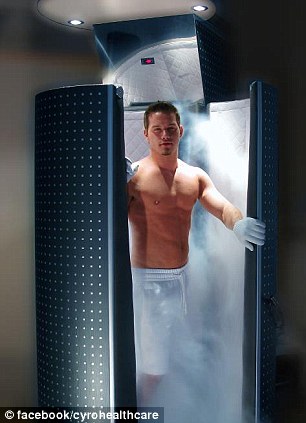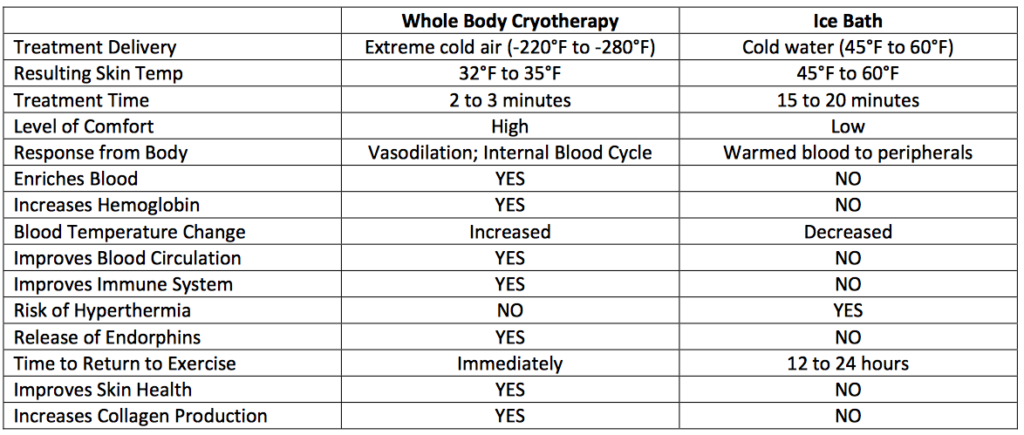15 Oct Why Whole Body Cryotherapy is More Effective than Ice Baths in Sarasota Florida
 Why Whole Body Cryotherapy is More Effective than Ice Baths
Why Whole Body Cryotherapy is More Effective than Ice Baths
Ice Baths have been used regularly in professional and amateur sports for the rehabilitation of athletic injuries. The Ice Bath affects the body in a completely different way than does Whole Body Cryotherapy. The Cryosauna has been shown to be more beneficial, more convenient and has no negative side effects. So what are the differences between the Ice Bath and the Whole Body Cryotherapy?
 The ice bath process involves immersing the body in cold water of about 45°F to 60°F for fifteen to twenty minutes. The body’s response is to warm blood in the core and send it to the peripherals. This is the body’s attempt to maintain normal skin and tissue temperature, and to combat the cold water environment. This response continues as long as the body has the energy to heat the blood and avoid hyperthermia. When the body can no longer heat enough blood, the cold begins to penetrate the tissues and muscles, and also cools the blood.
The ice bath process involves immersing the body in cold water of about 45°F to 60°F for fifteen to twenty minutes. The body’s response is to warm blood in the core and send it to the peripherals. This is the body’s attempt to maintain normal skin and tissue temperature, and to combat the cold water environment. This response continues as long as the body has the energy to heat the blood and avoid hyperthermia. When the body can no longer heat enough blood, the cold begins to penetrate the tissues and muscles, and also cools the blood.
So while in an ice bath, the body is struggling with unrelenting, penetrating, physical cold. When the body can no longer heat enough blood, the muscles and tissues start to congeal and freeze, beginning at the skin’s surface and continuing to the core. The results are stiff muscles and tendons, and difficulty getting warm again. The danger of ice baths is that if the body is allowed to cool too much, hyperthermia can set it. In addition to being very uncomfortable and potentially dangerous, ice baths interrupt the supply of oxygen to the skin’s surface which can promote skin diseases.
Whole Body Cryotherapy places the body in extremely cold air ranging from ‐220°F to ‐280°F for two to three minutes. The skin is rapidly cooled down to about 32°F to 35°F. The experience is comfortable since the delivery of the extreme cold is completely dry. Reading signals from skin receptors, the brain realizes that it cannot fight this extreme cold and takes very unique actions. Rather than send warmed blood to the peripherals and skin, the body undergoes severe vasoconstriction of blood vessels and capillaries in order to keep the body’s core temperature at 98.6°F. Blood is shunted away from the peripherals and into an internal cycle to protect vital organs. This process triggers the enrichment (with hormones, enzymes, oxygen) of blood and circulation to the internal organs under higher blood pressure. In addition, the temperature of the blood may rise between 2°F to 6°F which can kill viruses.
When the cryotherapy session is completed, the body undergoes rapid vasodilation as the higher internal blood pressure drives the enriched blood back to the peripherals. The body has also released endorphins into the blood, providing a euphoric feeling and mood improvement. Since cryotherapy does not freeze tissue and muscles, the body can immediately return to exercise. This is especially helpful if a training schedule requires more than one workout session per day. With ice baths, muscles and tissues need rest and recovery time in order to return to normal activity.






No Comments